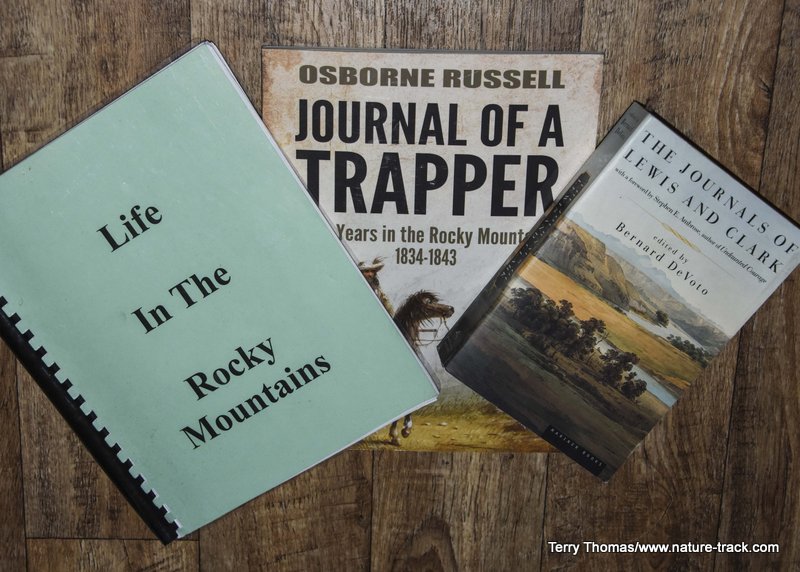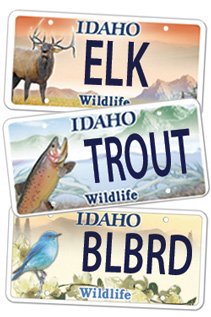Fine Winter Reading

Journals of the mountainmen, fur trappers and explorers give us a tremendous glimpse of what the west was like before settlement.
On a long winter’s evening not long ago, I sat back in my recliner with a good book. Before long, I was lost in the story of the old west of the 1830’s and the men who journeyed west for a multitude of reasons. It was a tale of heroism, skullduggery, fortune building, adventure, hardship, death and more adventure.
That it was a true story added to the pleasure and I found myself wondering if I would have been tough enough to have endured the starvation, icy winter storms, swollen rivers, grizzly bear attacks and war with Native Americans. It was a hard country and required hard men.
At first, I read just for something to do while it was dark outside. Soon though, I became fascinated by the story and the way the west was almost 200 years ago. I picked up an Atlas of the United States and tried as best as I could to follow their travels. Some of the names and places I recognized from the descriptions, or because the place names haven’t changed over time. Other places escaped me and even a current map didn’t always help.
My imagination ran wild with the descriptions of their travels. These were places I have been to, some of which I have an intimate knowledge of! Fall Creek, Swan Valley, Pierre’s Hole (Teton Valley), Jackson Hole, Craters of the Moon, the Blackfoot River, Bear Lake, Island Park, Salmon, Bighorn Valley, Montana and Cache Valley, Utah—I had actually walked in their footsteps at times.
Eastern Idaho was the epicenter for much of their activity and when they described the place where a fine stream was swallowed up by the earth, it wasn’t hard to imagine the Big Lost and Little Lost Rivers. When they described a place where hot springs bubbled and tasted like soda, Soda Springs was easy to visualize. Fort Hall was a safe haven when things got heated between trappers and Native Americans.
Descriptions of wildlife of course caught my attention and I was astounded at what they found. Bighorn sheep were common around Pocatello. Bison were encountered throughout most of our country. Osborne Russell described Teton Valley this way: “This was a beautiful valley, consisting of a smooth plain intersected by small streams and thickly clothed with grass and herbage and abounding with buffalo, elk, deer, antelope, etc.” Many other places were similarly described along with catching salmon with bare hands and shooting and eating grizzly bears.
There are many different histories of fur trappers, explorers and mountain men. Personally though, I like the first-person journal accounts for their day to day descriptions and the feel of really being there. If you have a few evenings to sit beside the fire and read, I can suggest several. The Journals of Lewis and Clark (the version edited by Bernard DeVoto), would be a good starting place for such an endeavor as it is essentially the beginning of the era, at least in the intermountain west. Two more great journals are: Osborne Russell’s Journal of a Trapper and Warren Angus Ferris’s, Life in the Rocky Mountains, both of which cover much of the 1830’s. It is especially fun to read them essentially concurrently as the histories intertwine and some of the same real-life characters appear in both. All of these are available from bookstores and on the Internet.
My wife has surely tired of hearing, “Honey, listen to THIS!”, followed by me reading a passage or two about a favorite place that we both know. She is aware of my fascination with the concept of time travel though and these journals are the closest thing to a time machine I am likely to ever see.
Help Idaho Wildlife
When we traveled across the state in October 2017, we visited most of the Idaho Department of Fish and Game wildlife management areas. Most of the vehicles we saw using the wildlife management areas did not have wildlife plates. Buying wildlife plates is a great way for non-hunters and hunters alike to support wildlife-based recreation like birding.
C'mon folks, let's help Idaho's wildlife by proudly buying and displaying a wildlife license plate on each of our vehicles!
See below for information on Idaho plates. Most states have wildlife plates so if you live outside Idaho, check with your state's wildlife department or vehicle licensing division for availability of state wildlife plates where you live.
And tell them that you heard about it from Nature-track.com!

Wildlife License Plates
Great news! as of 2024, there are three NEW designs for license plates. They still are bluebird, cutthroat trout and elk, but they are beautiful.
Idaho Wildlife license plates provide essential funding that benefits the great diversity of native plants and wildlife that are not hunted, fished or trapped—over 10,000 species or 98% of Idaho’s species diversity. Game species that share the same habitats (such as elk, deer, antelope, sage-grouse, salmon, trout) also benefit from these specialty plates.
No state tax dollars are provided for wildlife diversity, conservation education and recreation programs. Neither are any revenues from the sale of hunting or fishing licenses spent on nongame species. Instead, these species depend on direct donations, federal grants, fundraising initiatives—and the Idaho Wildlife license plates.
Both my vehicles have Bluebird Plates. I prefer the bluebird because the nongame program gets 70 percent of the money from bluebird plates, but only 60 percent of the money from elk and trout plates - 10 percent of the money from elk plates supports wildlife disease monitoring and testing programs (to benefit the livestock industry) and 10 percent from cutthroat plates supports non-motorized boat access.
Incidentally, in 2014, the Idaho Legislature denied the Department of Fish and Game the ability to add new plates or even to change the name of the elk and cutthroat plates (very specific) to wildlife and fish plates, a move that would have allowed for changing images occasionally and generating more revenue. It would seem that they believe that we Idahoans don't want a well funded wildlife program.
I think it is time we let the Legislature know that Idahoan support wildlife funding and that we would like to see these generic plates come to fruition.
Wildlife License Plates
Great news! as of 2024, there are three NEW designs for license plates. They still are bluebird, cutthroat trout and elk, but they are beautiful.
Idaho Wildlife license plates provide essential funding that benefits the great diversity of native plants and wildlife that are not hunted, fished or trapped—over 10,000 species or 98% of Idaho’s species diversity. Game species that share the same habitats (such as elk, deer, antelope, sage-grouse, salmon, trout) also benefit from these specialty plates.
No state tax dollars are provided for wildlife diversity, conservation education and recreation programs. Neither are any revenues from the sale of hunting or fishing licenses spent on nongame species. Instead, these species depend on direct donations, federal grants, fundraising initiatives—and the Idaho Wildlife license plates.
Both my vehicles have Bluebird Plates. I prefer the bluebird because the nongame program gets 70 percent of the money from bluebird plates, but only 60 percent of the money from elk and trout plates - 10 percent of the money from elk plates supports wildlife disease monitoring and testing programs (to benefit the livestock industry) and 10 percent from cutthroat plates supports non-motorized boat access.
Incidentally, in 2014, the Idaho Legislature denied the Department of Fish and Game the ability to add new plates or even to change the name of the elk and cutthroat plates (very specific) to wildlife and fish plates, a move that would have allowed for changing images occasionally and generating more revenue. It would seem that they believe that we Idahoans don't want a well funded wildlife program.
I think it is time we let the Legislature know that Idahoan support wildlife funding and that we would like to see these generic plates come to fruition.

"WOW. What a phenomenal piece you wrote. You are amazing." Jennifer Jackson
That is embarrassing, but actually a fairly typical response to my nature essays. Since The Best of Nature is created from the very best of 16 years of these nature essays published weekly in the Idaho Falls Post Register (online readership 70,000), it is a fine read. It covers a wide variety of topics including humorous glimpses of nature, philosophy, natural history, and conservation. Readers praise the style, breadth of subject matter and my ability to communicate complex and emotional topics in a relaxed and understandable manner.
Everyone can find something to love in this book. From teenagers to octogenarians, from the coffee shop to the school room, these nature essays are widely read and enjoyed.
Some of the essays here are my personal favorites, others seemed to strike a chord with readers. Most have an important message or lesson that will resonate with you. They are written with a goal to simultaneously entertain and educate about the wonderful workings of nature. Some will make you laugh out loud and others will bring a tear to the eye and warm your heart.
Readers Write:
"You hit a home run with your article on, Big Questions in Nature. It should be required reading for everyone who has lost touch with nature...great job!" Joe Chapman
"We enjoyed your column, Bloom Where Planted. Some of the best writing yet. The Post Register is fortunate to have your weekly columns." Lou Griffin.
To read more and to order a copy, click here or get the Kindle version
Copies are also available at:
Post Register
Island Park Builders Supply (upstairs)
Barnes and Noble in Idaho Falls
Harriman State Park, Island Park
Museum of Idaho
Valley Books, Jackson Wyoming
Avocet Corner Bookstore, Bear River National Wildlife Refuge, Brigham City, Utah
Craters of the Moon National Monument Bookstore, Arco, Idaho